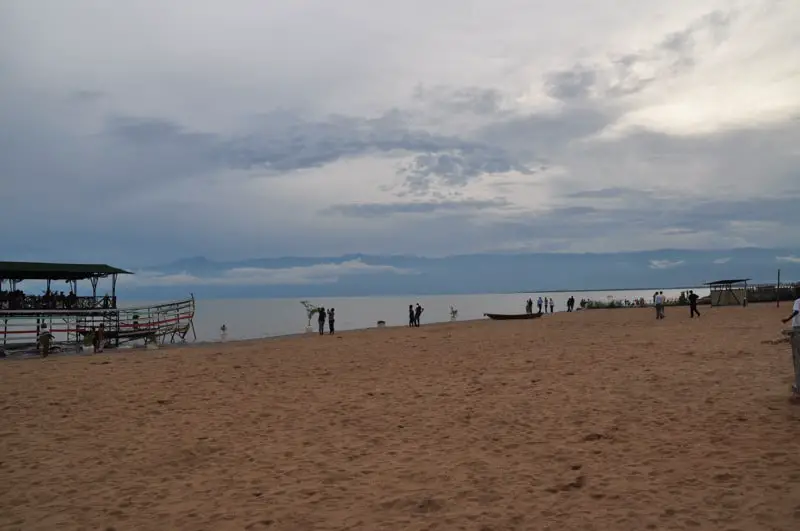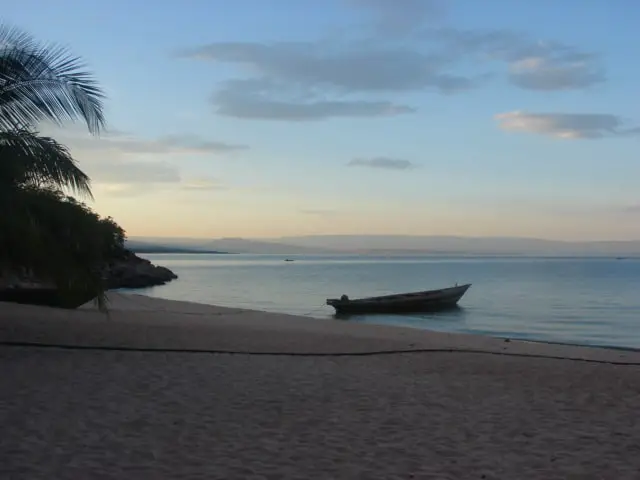Table of Contents
*This post may contain affiliate links. As an Amazon Associate we earn from qualifying purchases.
The Uniqueness of Tanganyika
While some people might think this is just a lake, no different from any other, there are several features that make this body of water stand out as lake tanganyikaa place to visit.
The Characteristics of the Plain-Like Lake
Tanganyika means “a great lake spreading out like a plain.” The approximately 1,136-mile-long coast could be the explanation of how the lake got its name. The lake is shaped in a rift, so it is long and somewhat narrow, lying in a valley about 2,000 feet below the tops of the surrounding mountains.
It is so large that four countries share its border. Tanzania controls most of the eastern side, and the Democratic Republic of the Congo has the majority of the long coastline on the west.
Burundi has a small piece of the northern shore, and while Zambia enjoys only 7 percent of the southern part of the lake, it still offers a large variety of things to do and see. Each of these countries offers activities and accommodations for the traveler.
The lake lies on a north-to-south plain with water flowing in from the northern rivers and streams and traveling south to an outlet that leads to the Congo River and eventually to the Atlantic Ocean.
There are several islands along the way offering opportunities to explore or stay. The major ones are owned by the Democratic Republic of the Congo, or DRC for short, and Zambia. However, Tanzania is not without its island as well. Be sure to ask about these islands when planning your trip.
The lake temperature stays warm and fairly constant. However, since this area of Africa only has two seasons, rainy and dry, you should see which time of year best suits the experience you want to have.
There are advantages to going in one season or another depending on what you hope to do. For instance, hiking is easier in the dry season of June to September. The ground is not slippery, and the temperature is warm but not humid. Also, chimpanzees go to the lake to get water in the dry season.
They will travel to higher elevations in the wet season to find food, and the muddy trails make it much harder to follow them. The rainy season of November through April is very humid, but it is better for watching birds, butterflies, and viewing the beautiful colors of the forest.
Some accommodations will be closed during certain months of the rainy season, so always be sure to check this out before planning your trip.
Historic Happenings on the Tanganyika Shore
Lake Tanganyika has existed for many centuries but has only been known to the rest of the world since the mid-1800s when Richard Burton and John Speke, both from England, discovered it while searching for the Nile’s source.
It was in 1871, on the shores of Tanganyika, that the famous words, “Dr. Livingstone, I presume?” were spoken by Henry Stanley to English explorer and missionary Dr. David Livingstone.
Beginning in 1960, Jane Goodall, another British subject, spent over 50 years studying chimpanzees in Tanzania in the Gombe Stream National Park located off the coast of this lake. Now you can book your own adventure to this history-rich destination.
This World Record Holder Is Second to None for Fun
Lake Tanganyika, the world’s longest freshwater lake, may come in second oldest, second deepest, and second largest in volume compared to the world’s other freshwater basins, but with the variety four border countries have to offer, it is second to none for fun and excitement.
One Fish, Two Fish, Old Fish, New Fish
Because this is the oldest and deepest lake in Africa, there are hundreds and hundreds of species of fish that are not found anywhere else in the world. This Great Rift Valley lake is a must-visit, whether your enjoyment lies in catching fish or studying them.
Tanganyika is home to a very diverse group of these aquatic beings, including the Goliath Tiger and the Giant Nile Perch.
Over 250 species of cichlid fish and another 80 types of non-cichlid inhabit this lake, and most of them stay close to the shore and occupy the upper 300 feet of the water. This makes scuba diving a great way to enjoy this giant aquarium. On rare occasions, some have been found as deep as 980 feet where there is very little oxygen.
Commercial fishing is a major industry of this geographical area and provides food as well as financial resources. Freshwater fish are an important part of the Tanganyikan natives’ diet, providing more than half of the animal protein for the 10 million people who live in this area.
The great variety in color, shape, and size of these tropical fish make this lake a leading supplier of aquariums all over the world.
Other Aquatic Life
The Lake Tanganyika area is home to many other forms of marine life. There is a great assortment of freshwater shrimp, crab, snails, mussels and even jellyfish. You will find crocodiles, water cobra and turtles in the marshy land nearby, and hippos won’t be far away from the lake in which they like to swim.
The lake has an average depth of 1,870 feet, but it plummets to a depth of 4,800 feet in some points. Unlike oceans, whose currents mix upper and lower levels of water, allowing fish to live in extremely deep places, Tanganyika’s waters do not mix.
This means that the lowest depths lack enough oxygen for anything to live and are called “fossil waters.” Along with the lack of oxygen in these extreme depths, there is also an abundance of hydrogen sulfide, which is toxic, contributing to the lack of life in the deepest parts of the lake.
Elephants, Giraffes and Birds — Oh My!

Animal life is not limited to the water. Africa is known for many land animals, and they can be seen in the Tanganyika area also. Safaris are one of the ways to view wildlife such as leopards, antelopes, elephants, giraffes and lions.
Why go to a zoo when these magnificent creatures can be viewed in their natural habitat? There are also birdwatching excursions that you can book, or you can plan a trek through the forests and national parks that surround Lake Tanganyika.
Accommodations for Everyone
No matter what level of luxury or “roughing it” you would like, there is something for you. A traveler can choose from a beach, forest, hilltop or island location and from a canvas tent, hotel or luxury resort. Also, be sure to ask whether rates are for the room only or for all-inclusive packages.
Don’t Leave Home Without Them
No matter where you stay, be sure to pack some sightseeing necessities. A hat is a must to protect you from the sun. Wearing this headgear is a good idea whether you’re lying on the beach, floating lazily in the water or hiking through a park.
Durable, waterproof, yet comfortable hiking boots are a great idea for trekking in the mountains. There are rocks and slippery slopes to maneuver. Absolutely do not forget binoculars. The scenery is breathtaking, and the animal life amazing. It would be a tragedy to miss these once-in-a-lifetime views because you left this piece of equipment at home.
How To Reach the Lake Tanganyika
You are ready to pack your bags, but how do you reach this lake that is snugly tucked into the mountains? There are a few ways. The best route for international guests is to fly into Tanzania and go by smaller aircraft or train the remainder of the way.
There is also a ferry that transports travelers to different points around the lake. Since the lake is approximately 400 miles long, make sure you have enough time to get to your destination and back.

Everyone Is Welcome
Lake Tanganyika has something for everyone. Customize your trip so the whole family will have memories to cherish. If your idea of a good time is playing in the water, be prepared to swim, snorkel, wakeboard or even scuba dive.
Maybe you would rather be on the water than in it. There are many boating opportunities. You have your choice of sailing, kayaking or taking a sunset cruise. You might enjoy the sport of fishing or want to lie on the white sand beaches and enjoy the crystal-clear water from the shore.
Others prefer land activities better. Be assured there are plenty of choices for that as well. The national parks, rainforests and wildlife reserves are great places to go hiking or bird watching. These areas also allow you to observe chimpanzees and other primates.
Maybe a safari is more your style. Book a group tour and spend the day looking for big game. After a long, fun day, come back to your luxury resort, beach retreat, forest lodge or campsite.
Take in the culture of the area and get to know local residents as well as other travelers. Your trip to Lake Tanganyika in the heart of Africa will be a bright spot in your travel memories for years to come.

